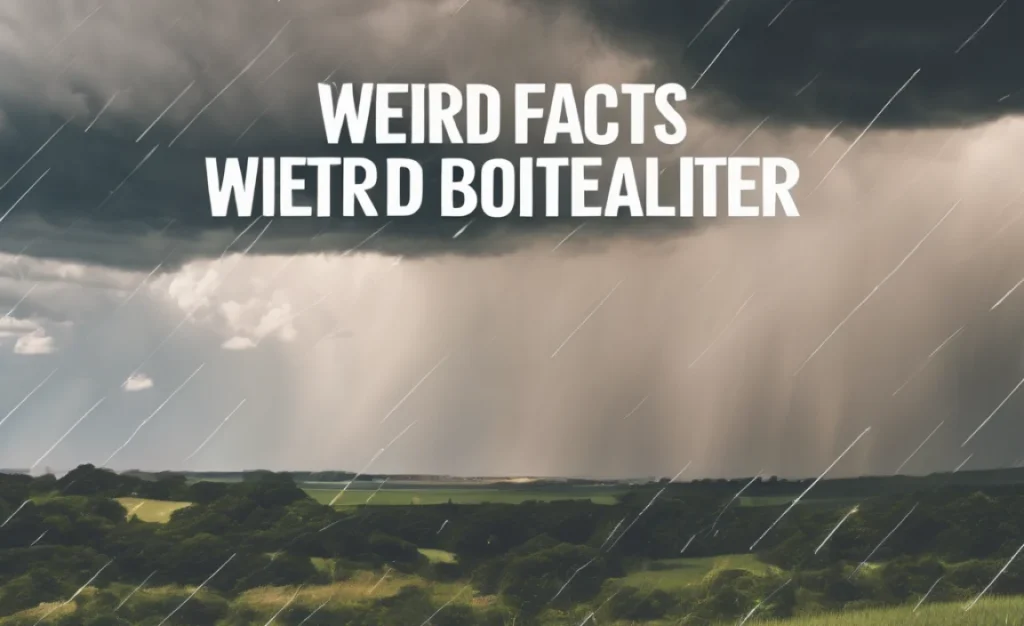Have you ever wondered why the weather is so strange? Sometimes it rains frogs or fish! Isn’t that weird? Weather can be full of surprises. From weird facts about weather, we learn how amazing and mysterious it is. Did you know lightning can strike the same place twice? Let’s dive into some more bizarre weather facts that will blow your mind.
Key Takeaways
- Weather can create amazing and strange phenomena.
- Snowflakes are unique and never look the same.
- Weird facts about weather can surprise you.
- Lightning can create beautiful glass in sand.
- Some places experience colored rain.
Strange Weather Phenomena
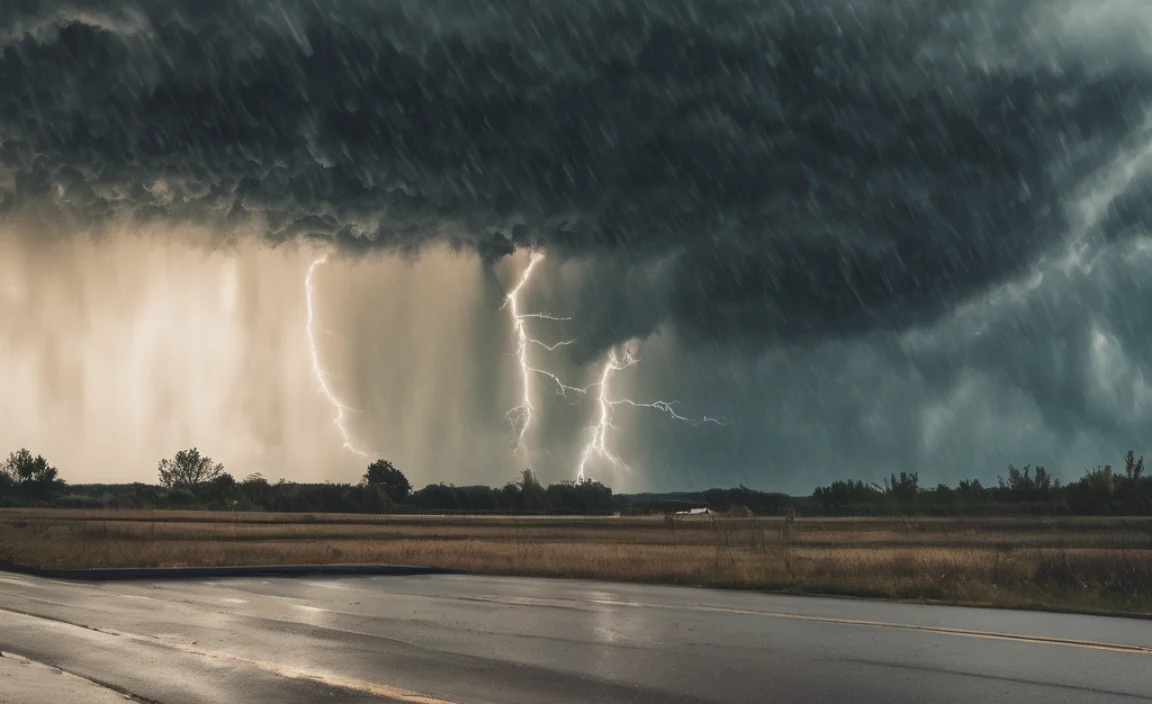
Weather is not just about rain or sunshine. Sometimes, it does unbelievable things. Have you heard about raining animals? This strange phenomenon occurs when strong winds pick up small creatures like frogs or fish and drop them far away. It happens rarely but leaves everyone amazed. Another example is the mysterious ball lightning. It’s a glowing ball that floats in the air during thunderstorms. Scientists are still trying to understand it.
- Animals can rain from the sky.
- Ball lightning is a mysterious glowing sphere.
- Weather can turn sand into glass.
- Some rains have different colors.
- Ice storms can cover everything in ice.
- Rainbows sometimes form complete circles.
Have you ever seen a rainbow forming a complete circle? This happens when sunlight hits raindrops at just the right angle. Usually, we only see half because the ground is in the way. If you’re flying in a plane, you might see a full circle. Nature’s magic never fails to amaze us. Next time you see a rainbow, remember it could be a circle in disguise!
Fun Fact or Stats : In 2001, frogs reportedly rained over a town in Honduras!
Raining Animals
Did you know animals can rain from the sky? This happens during strong storms. When tornadoes or waterspouts occur, they can pick up small animals. Frogs, fish, and even spiders might get caught. The wind carries them far away. When the wind calms, these animals fall back to the ground. Imagine it raining frogs! It’s a rare but real event that has puzzled people for centuries. How amazing and weird is that?
Ball Lightning
Have you heard of ball lightning? It’s a glowing ball of light that appears during thunderstorms. It can be as small as a pea or as big as a basketball. People have seen it float through the air and even enter homes. Scientists are not sure what causes it. Some think it’s made of plasma. Others believe it’s a chemical reaction. Regardless, ball lightning is one of the most puzzling weather phenomena.
Colored Rain
Can rain be colorful? Yes, it can! Sometimes rain appears red, yellow, or even black. This happens when dust or pollution mixes with the raindrops. In some places, red rain has been linked to algae spores. In others, it’s due to high levels of iron dust. It’s rare but fascinating. Imagine looking outside and seeing a rain shower in your favorite color. Weather never stops surprising us with its wonders.
Unusual Lightning Facts
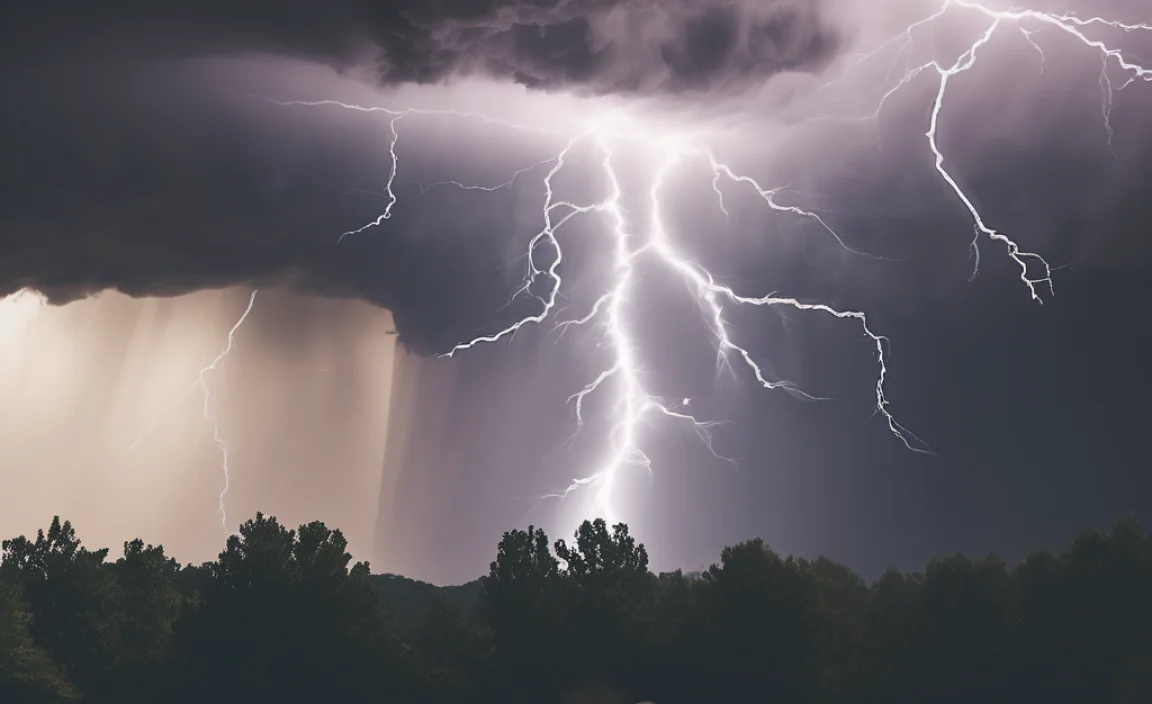
Lightning is powerful and striking. But did you know it can create glass? When lightning hits sandy soils, it melts the sand and forms glass tubes called fulgurites. These tubes are natural sculptures formed by the immense heat of lightning. They can be as long as a few feet. Lightning is also much hotter than the sun’s surface, reaching temperatures of 30,000 degrees Kelvin.
- Lightning creates fulgurites in sandy areas.
- Lightning is hotter than the sun’s surface.
- It can strike the same place more than once.
- Thunder is the sound of air expanding rapidly.
- Lightning can cause electrical surges.
Ever wondered why lightning strikes the same place twice? It’s because tall structures like trees and buildings are natural targets. Lightning prefers the shortest path to the ground. That’s why tall objects are often hit multiple times. It’s a reminder to stay indoors during a storm. Lightning is beautiful but also dangerous.
Fun Fact or Stats : Lightning strikes Earth about 8 million times a day!
Fulgurites
Have you ever seen a fulgurite? It’s a natural glass tube formed when lightning hits sand. The intense heat melts the sand, creating unique glass shapes. Each fulgurite is different, just like snowflakes. They can be short or several feet long. These fascinating structures reveal the incredible power of nature. Next time you see a storm, think about the amazing art lightning creates below the ground.
Lightning’s Temperature
Did you know lightning is hotter than the sun? It’s true! Lightning can reach 30,000 degrees Kelvin. This is much hotter than the sun’s surface, which is around 5,500 degrees Celsius. The extreme heat makes the air around it explode, creating thunder. This is why we see lightning before hearing thunder. Lightning is both beautiful and powerful, lighting up the sky and creating nature’s firework show.
Lightning Strikes Twice
Is it true that lightning never strikes the same place twice? No, it’s not! Lightning can and does strike the same spot multiple times. Tall structures, like the Empire State Building, are often hit many times a year. Lightning chooses the easiest path to the ground, and tall objects make the perfect target. So next time you hear a storm, remember that lightning can return to the same spot more than once.
Odd Snow and Ice Facts
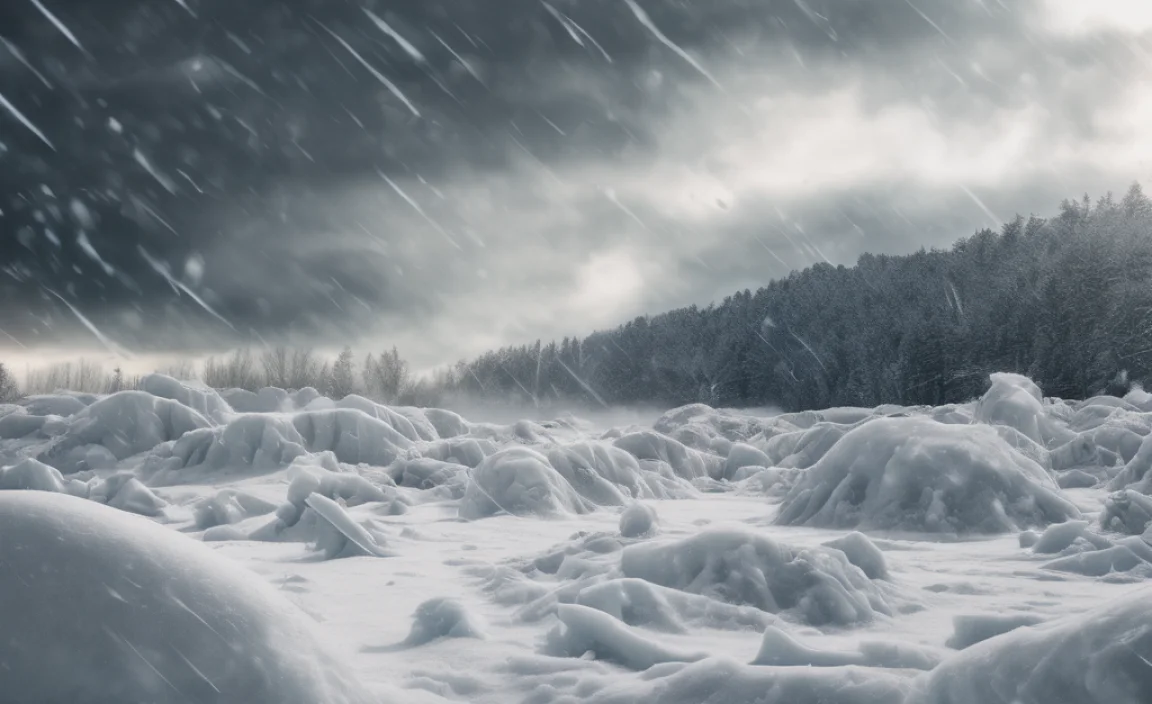
Snow and ice are magical parts of weather. Did you know that no two snowflakes are alike? Each snowflake has a unique design. They form when water vapor freezes in the sky. The shape depends on temperature and humidity. Snow can also be colorful. In some places, snow looks pink or red. Streaks of colored snow have been reported, mostly due to algae or dust.
- No two snowflakes are the same.
- Snow can appear colorful in some areas.
- Ice storms cover trees and cars in ice.
- Snow can fall in hot places like the Sahara.
- Blizzards can cause whiteout conditions.
Have you heard of the Great Blizzard of 1888? It was one of the deadliest in U.S. history. The storm buried cities under feet of snow. Thousands of people were stranded. This shows how powerful snow and ice can be. Blizzards can create whiteouts, making it hard to see. Extreme weather like this reminds us of nature’s strength and unpredictability.
Fun Fact or Stats : The largest snowflake ever recorded was 15 inches wide!
Unique Snowflakes
What makes snowflakes unique? Each snowflake forms around a tiny particle in the sky. As it falls, water vapor freezes on it, creating a pattern. The pattern changes as the snowflake moves through different temperatures. This is why no two snowflakes are alike. They’re tiny works of art from nature. Next time you catch a snowflake, remember it’s one-of-a-kind, just like you!
Colored Snow
Can snow be colorful? Sometimes it can appear red, pink, or even green. This happens when tiny algae or dust gets mixed with snow. In some places, red snow is called “watermelon snow” because it tastes slightly sweet. This phenomenon is more common in polar regions. It’s another way nature surprises us with its beauty. Imagine waking up to a world covered in colored snow!
Ice Storms
Ice storms are beautiful but dangerous. They happen when rain freezes on contact with surfaces. Everything becomes covered in a layer of ice. Trees and power lines can break under the weight. Roads become slippery and hard to drive on. Despite their dangers, ice storms create a stunning ice world. Sunlight reflects off the ice, making everything sparkle like diamonds.
Colorful Weather Events
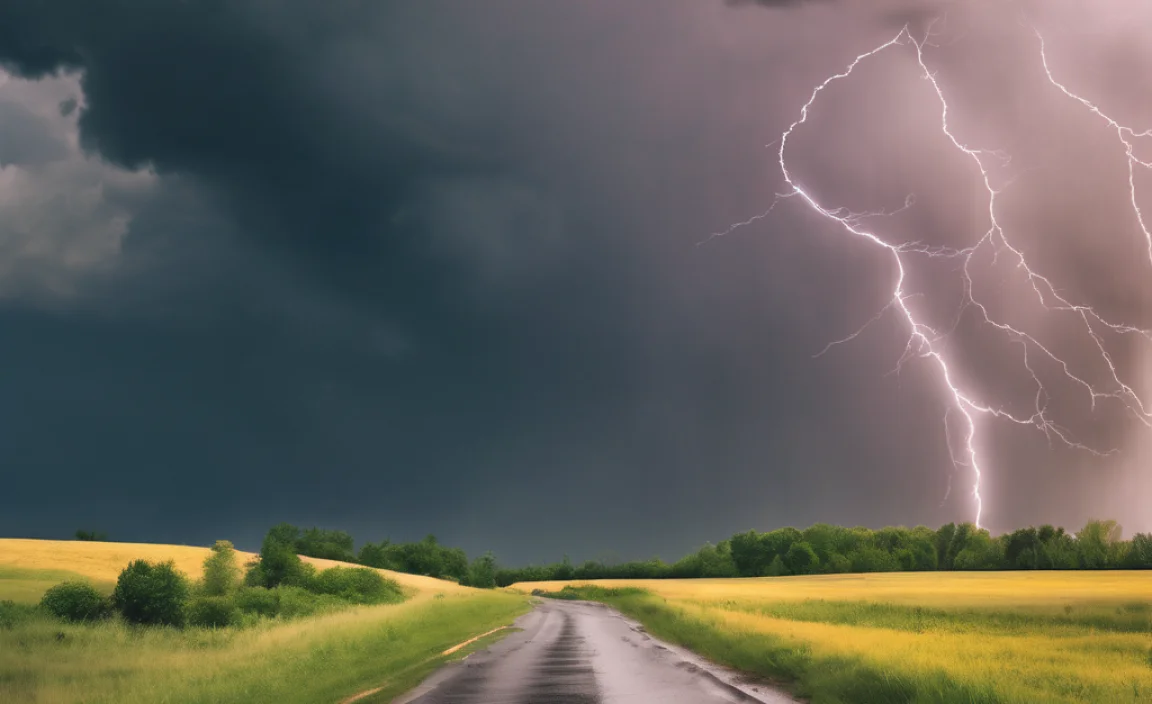
Weather can create a rainbow of colors. Have you ever seen a sun dog? Sun dogs are bright spots seen on either side of the sun. They appear when sunlight hits ice crystals in the atmosphere. Another colorful event is the aurora borealis. These dancing lights are seen near the poles. They occur when charged particles from the sun hit Earth’s magnetic field.
- Sun dogs appear on either side of the sun.
- Aurora borealis lights up polar skies.
- Rainbows can double, with two arches.
- Hailstones can have colored layers.
- Fog can create glowing halos at night.
Have you ever noticed a double rainbow? It’s a rare sight where two rainbows appear, one above the other. The second rainbow is fainter and has reversed colors. This happens when sunlight reflects twice inside raindrops. Nature has a colorful way of showing off, from rainbows to the glowing northern lights. These events remind us of the beauty and magic of weather.
Fun Fact or Stats : The aurora borealis is also called the northern lights!
Sun Dogs
Have you seen sun dogs? They are bright spots that appear on either side of the sun. Sun dogs occur when sunlight passes through ice crystals high in the atmosphere. They are most visible when the sun is low. These colorful spots often appear with a halo around the sun. Sun dogs are beautiful and remind us of the wonders above us.
Aurora Borealis
Have you ever seen the aurora borealis? Also known as the northern lights, this colorful display lights up the night sky near the poles. It happens when charged particles from the sun collide with Earth’s atmosphere. The result is a beautiful dance of lights in green, red, and other colors. The aurora is a stunning example of nature’s beauty and power.
Double Rainbows
Have you ever seen a double rainbow? It’s a rare event that happens when sunlight reflects twice inside raindrops. The result is two rainbows, one above the other. The second rainbow is fainter and has reversed colors. Double rainbows are a beautiful reminder of nature’s artistry. Next time you see a rainbow, look for its twin. You might be lucky enough to catch a glimpse!
Weather Extremes
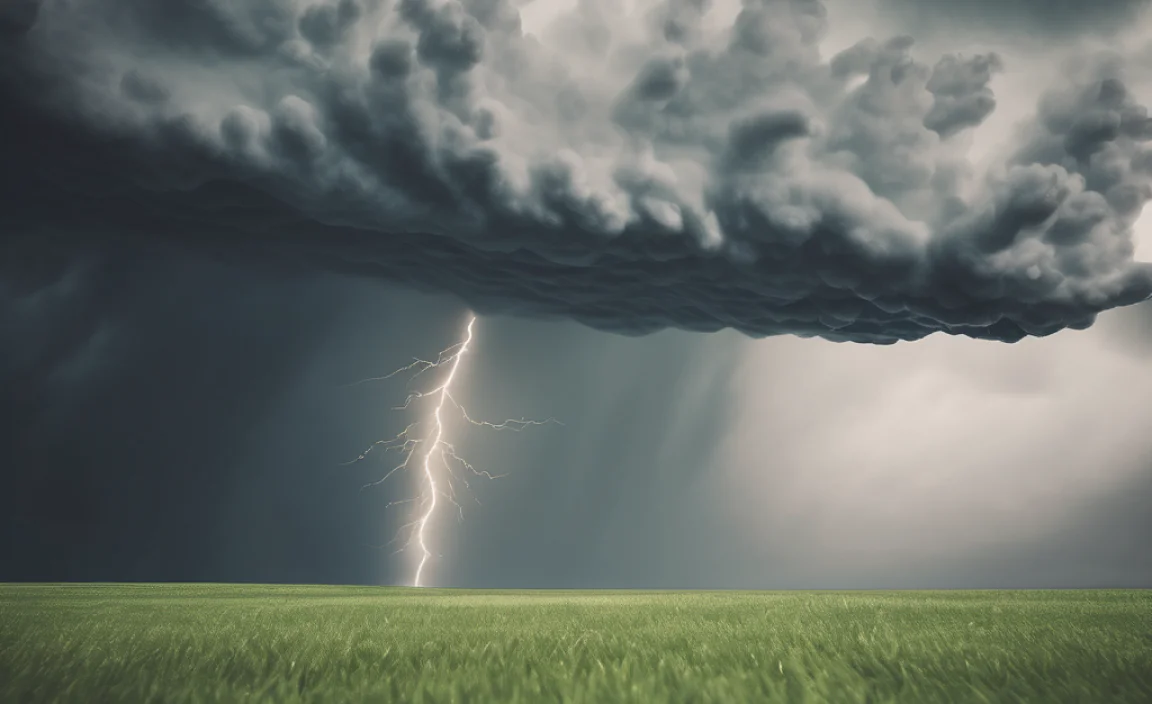
Weather can be extreme and wild. The hottest temperature ever recorded on Earth was in Furnace Creek, California. It reached 134 degrees Fahrenheit. In contrast, the coldest temperature was in Antarctica, at minus 128.6 degrees Fahrenheit. Weather can also bring strong winds. The fastest wind speed recorded was 253 miles per hour in Australia during a cyclone.
- Furnace Creek reached 134 degrees Fahrenheit.
- Antarctica recorded minus 128.6 degrees Fahrenheit.
- Cyclone winds can reach over 250 mph.
- Hailstones can be the size of grapefruits.
- Monsoons bring heavy rain and flooding.
Weather extremes challenge us with their power. They remind us of nature’s might. During a cyclone, winds can uproot trees and damage buildings. Hailstones as big as grapefruits can fall during severe storms. Monsoons bring heavy rains, often causing floods. Weather is a force that shapes our world, both in beauty and in challenge.
Fun Fact or Stats : The largest hailstone recorded weighed 2.25 pounds!
Hottest and Coldest Places
Do you know where the hottest and coldest places on Earth are? Furnace Creek in California holds the record for the hottest temperature at 134 degrees Fahrenheit. On the other hand, Antarctica is the coldest place, reaching minus 128.6 degrees Fahrenheit. These extremes show how diverse our planet is. It’s amazing how weather can vary so much in different parts of the world.
Cyclone Winds
Have you heard of cyclone winds? They are powerful and can reach incredible speeds. The fastest wind recorded was in Australia at 253 miles per hour. Cyclones can cause lots of damage. They uproot trees, destroy homes, and cause flooding. These storms are a reminder of nature’s power. They show how we must respect and prepare for extreme weather events.
Monsoons
Do you know what monsoons are? Monsoons bring heavy rains and winds to many parts of the world. They are seasonal and can last for months. While they provide needed rain for crops, they can also cause flooding. In some places, monsoons are a blessing. In others, they challenge people’s lives. Monsoons highlight the importance of understanding and preparing for weather patterns.
Conclusion
Weather is full of surprises and mysteries. From raining animals to colorful snow, these weird facts about weather show how amazing our world is. Each weather event, whether strange or extreme, teaches us about nature’s power and beauty. By understanding weather, we can better appreciate and protect our planet.
FAQs
Question: Why do frogs sometimes rain from the sky?
Answer: Frogs can rain from the sky during strong storms. Tornadoes or waterspouts lift small animals like frogs. The wind carries them far away. When the storm weakens, these animals fall to the ground. This rare event is one of many weird facts about weather.
Question: What is ball lightning?
Answer: Ball lightning is a mysterious weather phenomenon. It’s a glowing sphere of light that appears during thunderstorms. It can range in size and float through the air. Scientists are still studying it to understand its causes. It’s one of those weird facts about weather that amazes people.
Question: Can rain be different colors?
Answer: Yes, rain can appear in different colors. This happens when dust or pollution mixes with raindrops. In some places, red rain is due to algae spores. Weather phenomena like these are fascinating weird facts about weather.
Question: How can lightning create glass?
Answer: Lightning can create glass tubes called fulgurites. When lightning strikes sandy soil, the intense heat melts the sand. This forms natural glass sculptures. Fulgurites are unique examples of nature’s power and creativity.
Question: What makes snowflakes unique?
Answer: Each snowflake is unique because they form in different conditions. As snowflakes fall, they encounter varying temperatures and humidity. This creates different patterns for each flake. Like fingerprints, no two snowflakes are the same.
Question: What are sun dogs?
Answer: Sun dogs are bright spots that appear on either side of the sun. They form when sunlight hits ice crystals high in the atmosphere. Sun dogs are most visible when the sun is low. They create beautiful, colorful displays in the sky.


